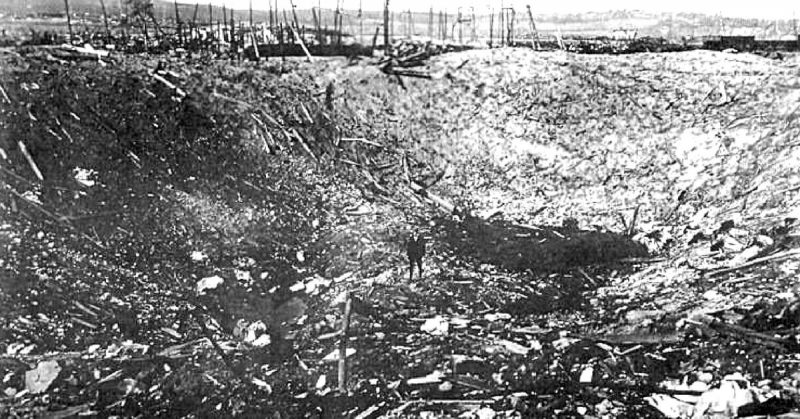By October 1918, the 1st World War was winding down. It was clear to most observers that the Western Allies would be victorious. Life in the United States felt safe. The foe was in Europe, far across the Atlantic Ocean. The citizens of Morgan, New Jersey, however, were about to feel like they were on the front lines.
The town was home to one of the largest munitions plants in the world at the time, the T.A. Gillespie Munitions Loading Plant. It was tasked with loading high explosives into the countless artillery shells which the US was sending to Europe.
Combat during the 1st World War required an extensive use of artillery and the United States needed every shell, bomb, grenade or mine it could get its hands on.
The plant was massive, spanning 2,200 acres consisting of 700 individual buildings. Each part of the munitions-making process was carried out on site, from making their own high explosives, to final shell construction.
Due to the massive scale, and potential danger of this plant, many had concerns about its proximity to around 62,000 residents of northern New Jersey.
To quell these fears, the munitions plant took extensive measures to prevent a catastrophe. Each stage of the construction process was separated, and the high explosive was stored in massive bunkers, surrounded by earthen embankments.
At 7:40 PM, October 4, 1918, however, every safety precaution proved almost useless. The ground shook as building 6-1-1 became engulfed in a fireball and shockwave. The world, as the locals knew it, had just come to an end. Hell had been unleashed.
Building 6-1-1 was consumed in flames. No one knows how the blast started, but its effects were immediate. The fireball destroyed the power lines above the building, dimming lights around the plant. What was worse, though, was the force of the blast had cracked the water main. This meant the fire department could not get sufficient pressure to operate their hoses.

The fire began spreading as workers ran, searching for an escape. It set off high explosives, components, and even completed artillery shells. As the plant workers rushed out, they were met with a horrific scene.
Artillery shells were flying overhead. Glass, tossed up by the force of each blast, was raining down on them, and metal shrapnel ricocheted around the entire site.
One worker recalled being trapped by the barbed wire topped fence, which stood 6 feet high and surrounded the entire complex. Eventually, he and his companions managed to climb over, drop down the other side and sprint away from the terrifying explosions.
Unfortunately, artillery shells can travel far, and the nearby towns of Morgan, Perth Amboy, and South Amboy, received a barrage.
Shells landed on houses, schools, banks and storefronts. The locals were forced to flee, knowing that staying would only lead to death and despair. Nearly all the 62,000 citizens of the area were uprooted and made temporarily homeless. Many had their homes completely destroyed.
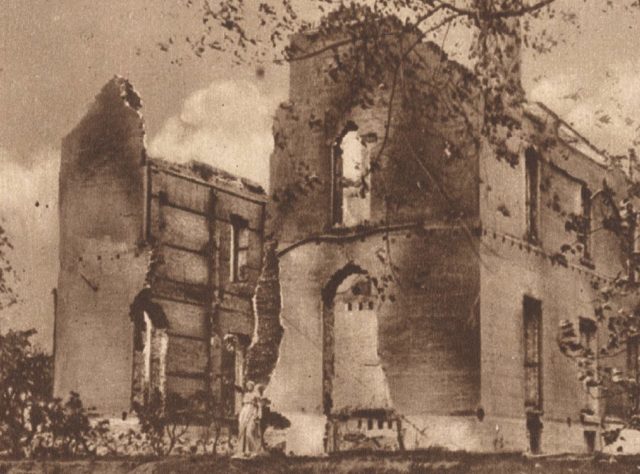
As in every disaster, some people rush towards the danger, and this was no exception.
Morgan and the munitions plant sit near the entrance to Hudson Bay, allowing for easier shipping of ammunition. However, the fires, explosions, and flying artillery shells, could possibly shut down the harbor. The duty to save lives and protect waterways caught the attention of 12 brave US Coast Guardsmen.
The Perth Amboy Coast Guard Station was alerted to the explosion almost immediately. A watchman noticed the sky light up as the first fireball shot up from the ground. There were barges, loaded with munitions, and guarded by Coast Guard personnel, which needed to be moved as soon as possible. Calls went out to every station, cutter, and office, requesting volunteers. By 1:30 AM a force of around 200 Coast Guardsmen were being ferried by car down to the plant.
When they arrived, they found no one in charge. Everyone from the plant was trying to escape. Guards were desperately trying to prevent a mad rush of families running back in to find loved ones. The train cars and barges full of explosives were sitting in what was essentially an ongoing artillery barrage.
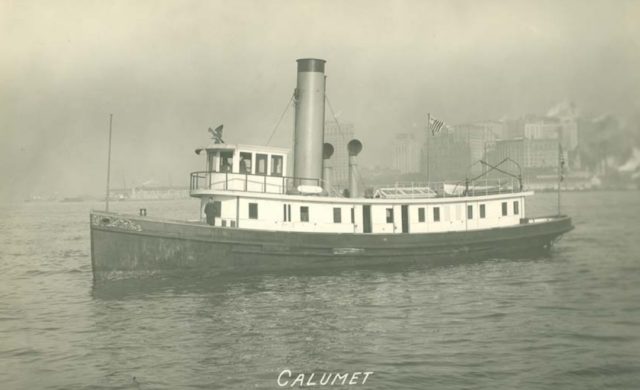
Coast Guard Lieutenant Joseph Stika took immediate command, organizing the removal of any survivors, posting guards at every entrance, and assisting hospital workers.
As the Coast Guardsmen rushed in to pull people out, they had to pass through large open yards, all the while dodging shells and shrapnel. Often, the only cover the men could find were the telephone poles spread throughout the plant. When they heard a shell coming towards them, they would duck behind a pole. Stika described hearing the thudding sound as steel shards embedded themselves on the other side.
As the men were trying to make it through this hellish barrage, they found a train car, loaded with explosives, sitting in the path of the fire. Six Coast Guardsmen, including Stika, rushed forward to assist. With the help of local volunteers and New Jersey National Guardsmen, they began the arduous task.
First, they had to lay down railroad tracks in front of the train car, to lead it away from the explosions. After hours of arduous, back-breaking labor they finally managed to move the train of 9 coal cars, all loaded with TNT. They hid the train over a mile away, between two mounds of earth. Once they were sure the car was safely stowed, the men rushed back towards the disaster area.
Ordinary Seaman Clifford Bennett also displayed heroism that night. Commandeering a car, he drove in towards the explosions. Searching for survivors, Bennett ferried them back out to the gates, and safety, going back again and again. Throughout the night, he dodged shells, shrapnel, and fires. The doors of the car were blown off, and Bennett was scorched by the flames but kept going.
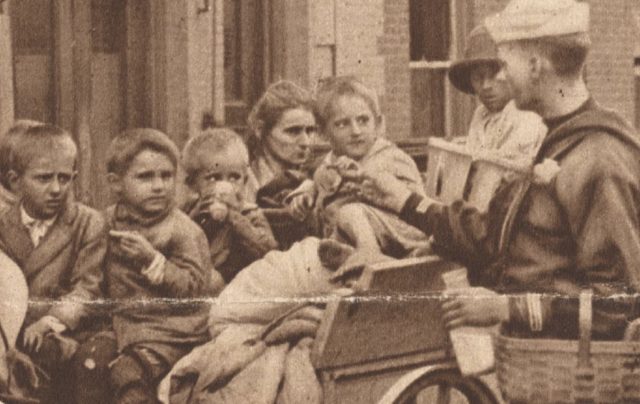
By the night of October 5, 1918, the plant fire had finally died down. The Coast Guardsmen, soldiers, survivors, and rescue workers were now able to take stock of the situation. 62,000 persons were displaced, either due to fire, or artillery shells hitting their homes. It is estimated over 100 plant workers, and locals died during the event, with 100s more wounded. Finally, 14-18 unidentified bodies were found on the site. They were buried in a mass grave which is located on nearby Ernston Road.
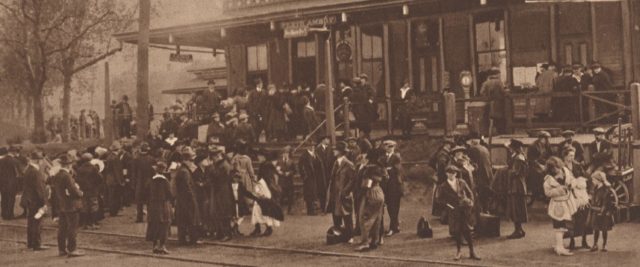
When there is a great tragedy, there is great courage. 12 of the US Coast Guardsmen involved in the relief effort were awarded the Navy Cross. These were granted for a variety of tasks; from moving train cars full of explosives to guarding a gate, and maintaining order. No Coast Guardsmen perished during this horrific episode.
War, it is often said, is hell. Unfortunately, it affects the innocent most of all.
That night, while full of sorrow, also saw some of the greatest acts of courage by ordinary people. They risked life and limb to save complete strangers, amid the chaos and terror of fire and explosions.
We must all be grateful that such people exist.
